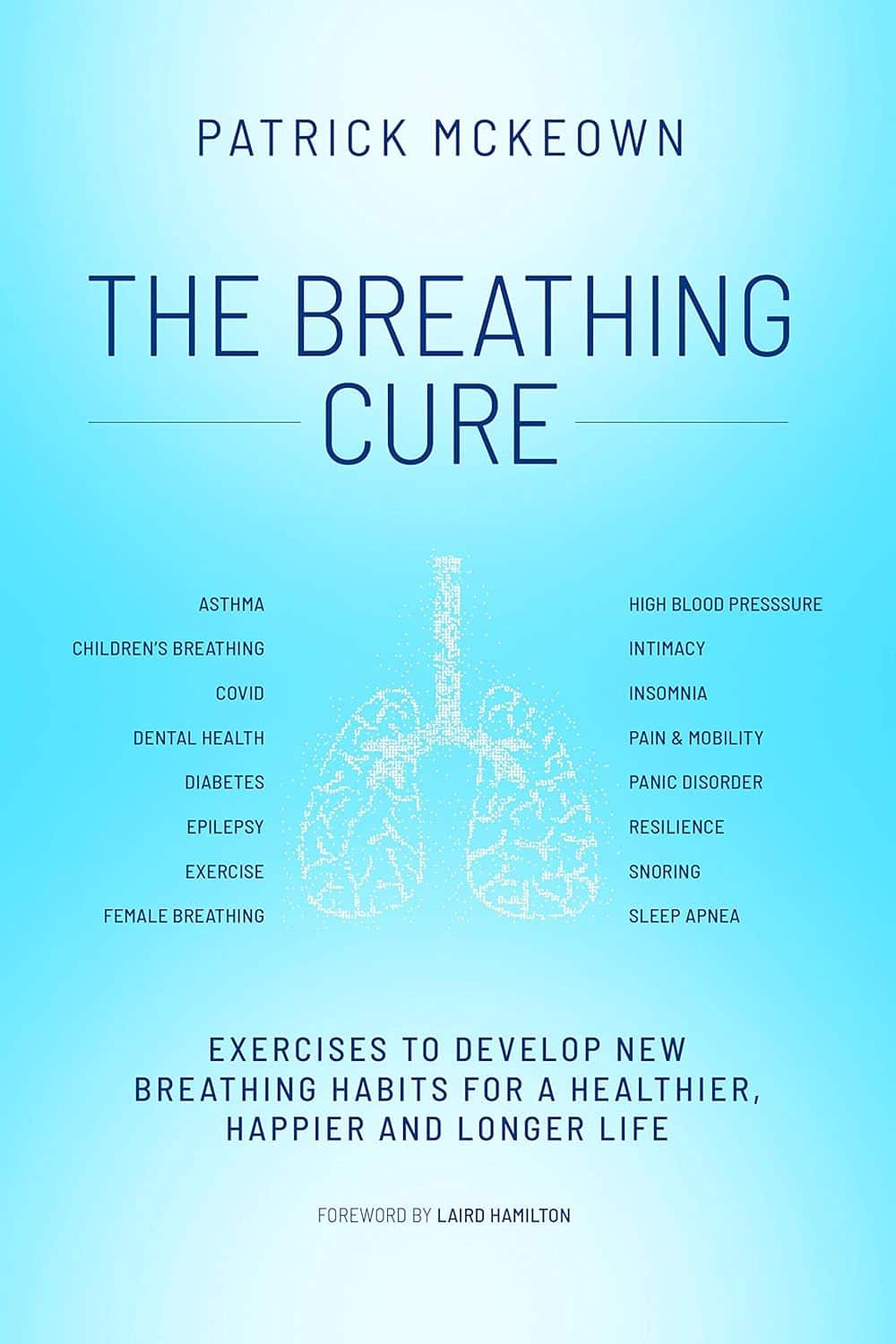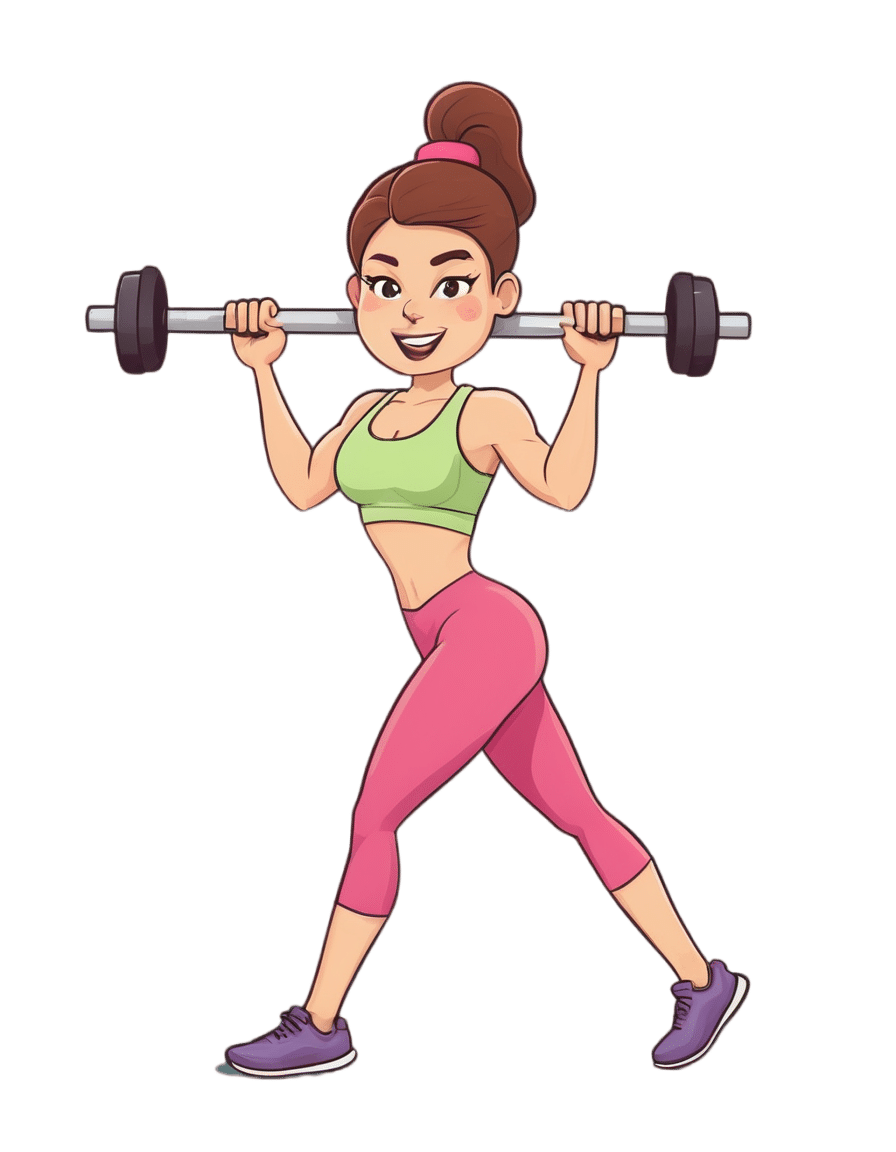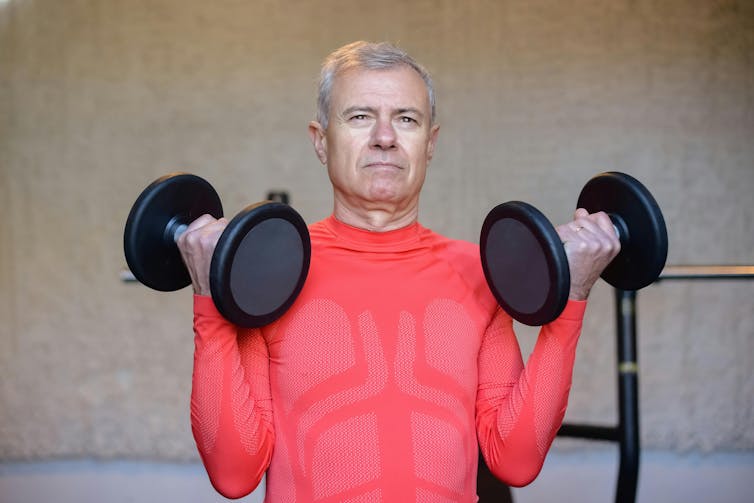
The Coffee-Cortisol Connection, And Two Ways To Tweak It For Health
10almonds is reader-supported. We may, at no cost to you, receive a portion of sales if you purchase a product through a link in this article.
Health opinions on coffee vary from “it’s an invigorating, healthful drink” to “it will leave you a shaking frazzled wreck”. So, what’s the truth and can we enjoy it healthily? Dr. Alan Mandell weighs in:
Enjoy it, but watch out!
Dr. Mandell is speaking only for caffeinated coffee in this video, and to this end, he’s conflating the health effects of coffee and caffeine. A statistically reasonable imprecision, since most people drink coffee with its natural caffeine in, but we’ll make some adjustment to his comments below, to disambiguate which statements are true for coffee generally, and which are true for caffeine:
- Drinking
coffeecaffeine first thing in the morning may not be ideal due to dehydration from overnight water loss. Coffeecaffeine is a diuretic, which means an increase in urination, thus further dehydrating the body.- Coffee contains great antioxidants, which are of course beneficial for the health in general.
- Cortisol, the body’s stress hormone, is generally at its peak in the morning. This is, in and of itself, good and correct—it’s how we wake up.
Coffeecaffeine consumption raises cortisol levels even more, leading to increased alertness and physical readiness, but it is possible to have too much of a good thing, and in this case, problems can arise because…- Elevated cortisol from early
coffeecaffeine drinking can build tolerance, leading to the need for morecoffeecaffeine over time. - It’s better, therefore, to defer drinking
coffeecaffeine until later in the morning when cortisol levels naturally drop. - All of this means that drinking
coffeecaffeine first thing can disrupt the neuroendocrine system, leading to fatigue, depression, and general woe. - Hydrate first thing in the morning before consuming
coffeecaffeine to keep the body balanced and healthy.
What you can see from this is that coffee and caffeine are not, in fact, interchangeable words, but the basic message is clear and correct: while a little spike of cortisol in the morning is good, natural, and even necessary, a big spike is none of those things, and caffeine can cause a big spike, and since for most people caffeine is easy to build tolerance to, there will indeed consistently be a need for more, worsening the problem.
In terms of hydration, it’s good to have water (or better yet, herbal tea) on one’s nightstand to drink when one wakes up.
If coffee is an important morning ritual for you, consider finding a good decaffeinated version for at least your first cup (this writer is partial to Lavazza’s “Dek Intenso”—which is not the same as their main decaf line, by the way, so do hold out for the “Dek Intenso” if you want to try my recommendation).
Decaffeinated coffee is hydrating and will not cause a cortisol spike (unless for some reason you find coffee as a concept very stressful in which case, yes, the stressor will cause a stress response).
Anyway, for more on all of this, enjoy:
Click Here If The Embedded Video Doesn’t Load Automatically!
Want to learn more?
You might also like to read:
Take care!
Don’t Forget…
Did you arrive here from our newsletter? Don’t forget to return to the email to continue learning!
Recommended
Learn to Age Gracefully
Join the 98k+ American women taking control of their health & aging with our 100% free (and fun!) daily emails:
-
Navigating the health-care system is not easy, but you’re not alone.
10almonds is reader-supported. We may, at no cost to you, receive a portion of sales if you purchase a product through a link in this article.
Hello, dear reader!
This is my first column for Healthy Debate as a Patient Navigator. This column will be devoted to providing patients with information to help them through their journey with the health-care system and answering your questions.
Here’s a bit about me: I have been a patient partner at The Ottawa Hospital and Ottawa Hospital Research Institute since 2017, and have joined a variety of governance boards that work on patient and caregiver engagement such as the Patient Advisors Network, the Ontario Health East Region Patient and Family Advisory Council and the Equity in Health Systems Lab.
My journey as a patient partner started much before 2017 though. When I was a teenager, I was diagnosed with a cholesteatoma, a rare and chronic disease that causes the development of fatty tumors in the middle ear. I have had multiple surgeries to try to fix it but will need regular follow-ups to monitor whether the tumor returns. Because of this, I also live with an invisible disability since I have essentially become functionally deaf in one ear and often rely on a hearing aid when I navigate the world.
Having undergone three surgeries in my adolescent years, it was my experience undergoing surgery for an acute hand and wrist injury following a jet ski accident as an adult that was the catalyst for my decision to become a patient partner. There was an intriguing contrast between how I was cared for at two different health-care institutions, my age being the deciding factor at which hospital I went to (a children’s hospital or an adult one).
The most memorable example was how, as a teenager or child, you were never left alone before surgery, and nurses and staff took all the time necessary to comfort me and answer my (and my family’s) questions. I also remember how right before putting me to sleep, the whole staff initiated a surgical pause and introduced themselves and explained to me what their role was during my surgery.
None of that happened as an adult. I was left in a hallway while the operating theater was prepared, anxious and alone with staff walking by not even batting an eye. My questions felt like an annoyance to the care team; as soon as I was wheeled onto the operating room table, the anesthetist quickly put me to sleep. I didn’t even have the time to see who else was there.
Now don’t get me wrong: I am incredibly appreciative with the quality of care I received, but it was the everyday interactions with the care teams that I felt could be improved. And so, while I was recovering from that surgery, I looked for a way to help other patients and the hospital improve its care. I discovered the hospital’s patient engagement program, applied, and the rest is history!
Since then, I have worked on a host of patient-centered policy and research projects and fervently advocate that surgical teams adopt a more compassionate approach with patients before and after surgery.
I’d be happy to talk a bit more about my journey if you ask, but with that out of the way … Welcome to our first patient navigator column about patient engagement.
Conceptualizing the continuum of Patient Engagement
In the context of Canadian health care, patient engagement is a multifaceted concept that involves active collaboration between patients, caregivers, health-care providers and researchers. It involves patients and caregivers as active contributors in decision-making processes, health-care services and medical research. Though the concept is not new, the paradigm shift toward patient engagement in Canada started around 2010.
I like to conceptualize the different levels of patient engagement as a measure of the strength of the relationship between patients and their interlocutors – whether it’s a healthcare provider, administrator or researcher – charted against the duration of the engagement or the scope of input required from the patient.
Defining different levels of Patient Engagement
Following the continuum, let’s begin by defining different levels of patient engagement. Bear in mind that these definitions can vary from one organization to another but are useful in generally labelling the level of patient engagement a project has achieved (or wishes to achieve).
Patient involvement: If the strength of the relationship between patients and their interlocutors is minimal and not time consuming or too onerous, then perhaps it can be categorized as patient involvement. This applies to many instances of transactional engagement.
Patient advisory/consulting: Right in the middle of our continuum, patients can find themselves engaging in patient advisory or consulting work, where projects are limited in scope and duration or complexity, and the relationship is not as profound as a partnership.
Patient partnership: The stronger the relationship is between the patient and their interlocutor, and the longer the engagement activity lasts or how much input the patient is providing, the more this situation can be categorized as patient partnership. It is the inverse of patient involvement.
Examples of the different levels of Patient Engagement
Let’s pretend you are accompanying a loved one to an appointment to manage a kidney disease, requiring them to undergo dialysis treatment. We’ll use this scenario to exemplify what label could be used to describe the level of engagement.
Patient involvement: In our case, if your loved one – or you – fills out a satisfaction or feedback survey about your experience in the waiting room and all that needed to be done was to hand it back to the clerk or care team, then, at a basic level, you could likely label this interaction as a form of patient involvement. It can also involve open consultations around a design of a new look and feel for a hospital, or the understandability of a survey or communications product. Interactions with the care team, administrators or researchers are minimal and often transactional.
Patient advisory/consulting: If your loved one was asked for more detailed information about survey results over the course of a few meetings, this could represent patient advisory/consulting. This could mean that patients meet with program administrators and care providers and share their insights on how things can be improved. It essentially involves patients providing advice to health-care institutions from the perspective of patients, their family members and caregivers.
Patient advisors or consultants are often appointed by hospitals or academic institutions to offer insights at multiple stages of health-care delivery and research. They can help pilot an initiative based on that feedback or evaluate whether the new solutions are working. Often patient advisors are engaged in smaller-term individual projects and meet with the project team as regularly as required.
Patient partnership: Going above and beyond patient advisory, if patients have built a trusting relationship with their care team or administrators, they could feel comfortable enough to partner with them and initiate a project of their own. This could be for a project in which they study a different form of treatment to improve patient-centered outcomes (like the time it takes to feel “normal” following a session); it could be working together to identify and remove barriers for other patients that need to access that type of care. These projects are not fulfilled overnight, but require a collaborative, longstanding and trusting relationship between patients and health-care providers, administrators or researchers. It ensures that patients, regardless of severity or chronicity of their illness, can meaningfully contribute their experiences to aid in improving patient care, or develop or implement policies, pilots or research projects from start to finish.
It is leveraging that lived and living experience to its full extent and having the patient partner involved as an equal voice in the decision-making process for a project – over many months, usually – that the engagement could be labeled a partnership.
Last words
The point of this column will be to answer or explore issues or questions related to patient engagement, health communications or even provide some thoughts on how to handle a particular situation.
I would be happy to collect your questions and feedback at any time, which will help inform future columns. Just email me at [email protected] or connect with me on social media (Linked In, X / Twitter).
It’s not easy to navigate our health-care systems, but you are not alone.
This article is republished from healthydebate under a Creative Commons license. Read the original article.
Share This Post
-
The Breathing Cure – by Patrick McKeown
10almonds is reader-supported. We may, at no cost to you, receive a portion of sales if you purchase a product through a link in this article.
We’ve previously reviewed this author’s “The Oxygen Advantage”, which as you might guess from the title, was also about breathing. So, what’s different here?
While The Oxygen Advantage was mostly about improving good health with optimized breathing, and with an emphasis on sports too, The Breathing Cure is more about the two-way relationship between ill health and disordered breathing (and how to fix it).
Many kinds of illnesses can affect our breathing, and our breathing can affect many types of illness; McKeown covers a lot of these, including the obvious things like respiratory diseases (including COVID and Long COVID, as well as non-infectious respiratory conditions like asthma), but also things like diabetes and heart disease, as well as peri-disease things like chronic pain, and demi-disease things like periods and menopause.
In each case (and more), he examines what things make matters better or worse, and how to improve them.
While the style itself is just as pop-science as The Oxygen Advantage, this time it relies less on anecdote (though there are plenty of anecdotes too), and leans more heavily on a generous chapter-by-chapter scientific bibliography, with plenty of citations to back up claims.
Bottom line: if you’d like to breathe better, this book can help in very many ways.
Click here to check out The Breathing Cure, and breathe easy!
Share This Post
-
What are compound exercises and why are they good for you?
10almonds is reader-supported. We may, at no cost to you, receive a portion of sales if you purchase a product through a link in this article.
So you’ve got yourself a gym membership or bought a set of home weights. Now what? With the sheer amount of confusing exercise advice out there, it can be hard to decide what to include in a weights routine.
It can help to know there are broadly two types of movements in resistance training (lifting weights): compound exercises and isolation exercises.
So what’s the difference? And what’s all this got to do with strength, speed and healthy ageing?
What’s the difference?
Compound exercises involve multiple joints and muscle groups working together.
In a push up, for example, your shoulder and elbow joints are moving together. This targets the muscles in the chest, shoulder and triceps.
When you do a squat, you’re using your thigh and butt muscles, your back, and even the muscles in your core.
It can help to think about compound movements by grouping them by primary movement patterns.
For example, some lower body compound exercises follow a “squat pattern”. Examples include bodyweight squats, weighted squats, lunges and split squats.
A Bulgarian split squat is a type of compound movement exercise. Evelin Montero/Shutterstock We also have “hinge patterns”, where you hinge from a point on your body (such as the hips). Examples include deadlifts, hip thrusts and kettle bell swings.
Upper body compounded exercises can be grouped into “push patterns” (such as vertical barbell lifts) or “pull patterns” (such as weighted rows, chin ups or lat pull downs, which is where you use a pulley system machine to lift weights by pulling a bar downwards).
In contrast, isolation exercises are movements that occur at a single joint.
For instance, bicep curls only require movement at the elbow joint and work your bicep muscles. Tricep extensions and lateral raises are other examples of isolation exercises.
Many compound exercises mimic movements we do every day. Photo by Ketut Subiyanto/Pexels Compound exercises can make daily life easier
Many compound exercises mimic movements we do every day.
Hinge patterns mimic picking something off the floor. A vertical press mimics putting a heavy box on a high shelf. A squat mimics standing up from the couch or getting on and off the toilet.
That might sound ridiculous to a young, fit person (“why would I need to practise getting on and off a toilet?”).
Unfortunately, we lose strength and muscle mass as we age. Men lose about 5% of their muscle mass per decade, while for women the figure is about 4% per decade.
When this decline begins can vary widely. However, approximately 30% of an adult’s peak muscle mass is lost by the time they are 80.
The good news is resistance training can counteract these age-related changes in muscle size and strength.
So building strength through compound exercise movements may help make daily life feel a bit easier. In fact, our ability to perform compound movements are a good indicator how well we can function as we age.
Want to be able to get stuff down from high shelves when you’re older? Practising compound exercises like a vertical press could help. Galina_Lya/Shutterstock What about strength and athletic ability?
Compound exercises use multiple joints, so you can generally lift heavier weights than you could with isolation exercises. Lifting a heavier weight means you can build muscle strength more efficiently.
One study divided a group of 36 people into two. Three times a week, one group performed isolation exercises, while the other group did compound exercises.
After eight weeks, both groups had lost fat. But the compound exercises group saw much better results on measures of cardiovascular fitness, bench press strength, knee extension strength, and squat strength.
If you play a sport, compound movements can also help boost athletic ability.
Squat patterns require your hip, knee, and ankle to extend at the same time (also known as triple extension).
Our bodies use this triple extension trick when we run, sprint, jump or change direction quickly. In fact, research has found squat strength is strongly linked to being able to sprint faster and jump higher.
Isolation exercises are still good
What if you’re unable to do compound movements, or you just don’t want to?
Don’t worry, you’ll still build strength and muscle with isolation exercises.
Isolation exercises are also typically easier to learn as there is no skill required. They are an easy and low risk way to add extra exercise at the end of the workout, where you might otherwise be too tired to do more compound exercises safely and with correct form.
In fact, both isolation and compound exercises seem to be equally effective in helping us lose body fat and increase fat-free muscle mass when total intensity and volume of exercises are otherwise equal.
Some people also do isolation exercises when they want to build up a particular muscle group for a certain sport or for a bodybuilding competition, for example.
Isolation exercises have their role to play. Photo by Kampus Production/Pexels I just want a time efficient workout
Considering the above factors, you could consider prioritising compound exercises if you’re:
- time poor
- keen to lift heavier weights
- looking for an efficient way to train many muscles in the one workout
- interested in healthy ageing.
That said, most well designed workout programs will include both compound and isolation movements.
Correction: This article has been amended to reflect the fact a weighted row is a pull pattern, not a push pattern.
Mandy Hagstrom, Senior Lecturer, Exercise Physiology. School of Health Sciences, UNSW Sydney and Anurag Pandit, PhD Candidate in Exercise Physiology, UNSW Sydney
This article is republished from The Conversation under a Creative Commons license. Read the original article.
Share This Post
Related Posts
-
Edamame vs Natto – Which is Healthier?
10almonds is reader-supported. We may, at no cost to you, receive a portion of sales if you purchase a product through a link in this article.
Our Verdict
When comparing edamame to nattō, we picked the nattō.
Why?
Yes, they are both soy beans, but in the battle of young and green vs old and fermented, there are some important differences:
In terms of macros, nattō has nearly 2x the protein for only slightly more carbs, and slightly more fiber, as well as more fat, but it’s not much and it’s a healthy profile, mostly polyunsaturated. All in all, a win for nattō in the macros category.
In the category of vitamins, edamame has more of vitamins B1, B5, B9, E, and K, while nattō has more of vitamins B2, B6, and C, this a 5:3 win for edamame in this round.
When it comes to minerals, edamame is not higher in any minerals, while nattō has more calcium, copper, iron, magnesium, manganese, phosphorus, potassium, selenium, and zinc. An overwhelming win for nattō.
A word on phytoestrogens: soy in general contains these, including both of these iterations of soy, and/but the human body can’t use plant estrogens as such. What it can do, however, is break them down and use the bits to make human estradiol, if and only if you have ovaries that are present and operational (so, no menopause and/or bilateral ovariectomy). Either way, there’s nothing to set one ahead of the other in this matter in this head-to-head.
As an extra point in nattō’s favor, nattō is, like many fermented foods, extra-good for gut health by bringing a wealth of beneficial bacteria. Edamame is also good for gut health (just by virtue of being an edible plant and containing fiber), but not on the same level as nattō.
Adding up the sections makes a clear win for nattō, but by all means enjoy either or both—diversity is good!
Want to learn more?
You might like:
21% Stronger Bones in a Year at 62? Yes, It’s Possible (No Calcium Supplements Needed!) ← nattō features in the method!
Enjoy!
Don’t Forget…
Did you arrive here from our newsletter? Don’t forget to return to the email to continue learning!
Learn to Age Gracefully
Join the 98k+ American women taking control of their health & aging with our 100% free (and fun!) daily emails:
-
At The Heart Of Women’s Health
10almonds is reader-supported. We may, at no cost to you, receive a portion of sales if you purchase a product through a link in this article.
A woman’s heart is a particular thing
For the longest time (and still to a large degree now), “women’s health” is assumed to refer to the health of organs found under a bikini. But there’s a lot more to it than that. We are whole people, with such things as brains and hearts and more.
Today (Valentine’s Day!) we’re focusing on the heart.
A quick recap:
We’ve talked previously about some of these sex differences when it comes to the heart, for example:
Heart Attack: His & Hers (Be Prepared!)
…but that’s fairly common knowledge at least amongst those who are attentive to such things, whereas…
…is much less common knowledge, especially with the ways statins are more likely to make things worse for a lot of women (not all though; see the article for some nuance about that).
We also talked about:
What Menopause Does To The Heart
…which is well worth reading too!
A question:
Why are women twice as likely to die from a heart attack as their age-equivalent male peers? Women develop heart disease later, but die from it sooner. Why is that?
That’s been a question scientists have been asking (and tentatively answering, as scientists do—hypotheses, theories, conclusions even sometimes) for 20 years now. Likely contributing factors include:
- A lack of public knowledge of the different symptoms
- A lack of confidence of bystanders to perform CPR on a woman
- A lack of public knowledge (including amongst prescribers) about the sex-related differences for statins
- A lack of women in cardiology, comparatively.
- A lack of attention to it, simply. Men get heart disease earlier, so it’s thought of as a “man thing”, by health providers as much as by individuals. Men get more regular cardiovascular check-ups, women get a mammogram and go.
Statistically, women are much more likely to die from heart disease than breast cancer:
- Breast cancer kills around 0.02% of us.
- Heart disease kills one in three.
And yet…
❝In a nationwide survey, only 22% of primary care doctors and 42% of cardiologists said they feel extremely well prepared to assess cardiovascular risks in women.
We are lagging in implementing risk prevention guidelines for women.
A lot of women are being told to just watch their cholesterol levels and see their doctor in a year. That’s a year of delayed care.❞
Source: The slowly evolving truth about heart disease and women
(there’s a lot more in that article than we have room for in ours, so do check it out!)
Some good news:
The “bystanders less likely to feel confident performing CPR on a woman” aspect may be helped by the deployment of new automatic external defibrillator, that works from four sides instead of one.
It’s called “double sequential external defibrillation”, and you can learn about it here:
A new emergency procedure for cardiac arrests aims to save more lives—here’s how it works
(it’s in use already in Canada and Aotearoa)
Gentlemen-readers, thank you for your attention to this one even if it was mostly not about you! Maybe someone you love will benefit from being aware of this
On a lighter note…
Since it’s Valentine’s Day, a little more on affairs of the heart…
Is chocolate good for the heart? And is it really an aphrodisiac?
We answered these questions and more in our previous main feature:
Chocolate & Health: Fact or Fiction?
Enjoy!
Don’t Forget…
Did you arrive here from our newsletter? Don’t forget to return to the email to continue learning!
Learn to Age Gracefully
Join the 98k+ American women taking control of their health & aging with our 100% free (and fun!) daily emails:
-
Avocado vs Jackfruit – Which is Healthier?
10almonds is reader-supported. We may, at no cost to you, receive a portion of sales if you purchase a product through a link in this article.
Our Verdict
When comparing avocado to jackfruit, we picked the avocado.
Why?
In terms of macros, avocado is higher in fats (famously healthy ones, including a good dose of omega-3), fiber (nearly 5x more), and protein (despite jackfruit being more often used as a meaty element in recipes, avocado has slightly more). Meanwhile, jackfruit is about 3x higher in carbs. All in all, a clear win for avocado.
Looking at vitamins, avocado has more of vitamins A, B2, B3, B5, B7, B9, E, K, and choline, while jackfruit has more of vitamins B1, B6, and C. Another win for avocado in this category.
In the category of minerals, avocado has more copper, iron, manganese, phosphorus, potassium, selenium, and zinc, while jackfruit has more calcium. One more win for avocado.
Adding up the sections makes for an easy overall win for avocado, but by all means enjoy either or both; diversity is good!
Want to learn more?
You might like:
Jackfruit vs Durian – Which is Healthier? ← including some fun durian facts (such as how to pick a good one, and what happens if you eat durian and drink alcohol)
Enjoy!
Don’t Forget…
Did you arrive here from our newsletter? Don’t forget to return to the email to continue learning!
Learn to Age Gracefully
Join the 98k+ American women taking control of their health & aging with our 100% free (and fun!) daily emails:











